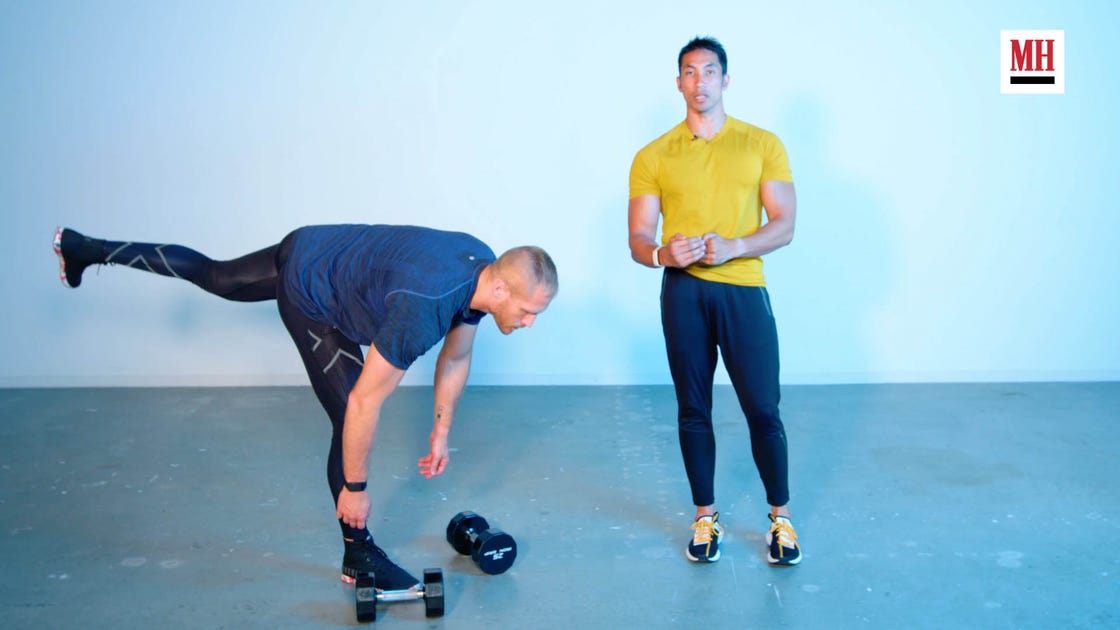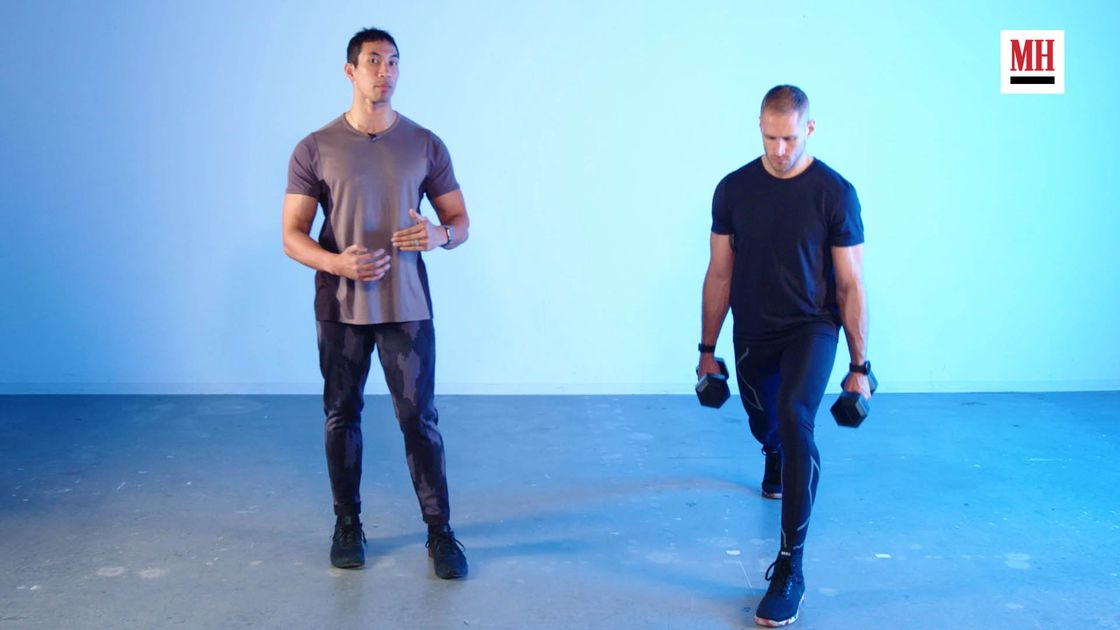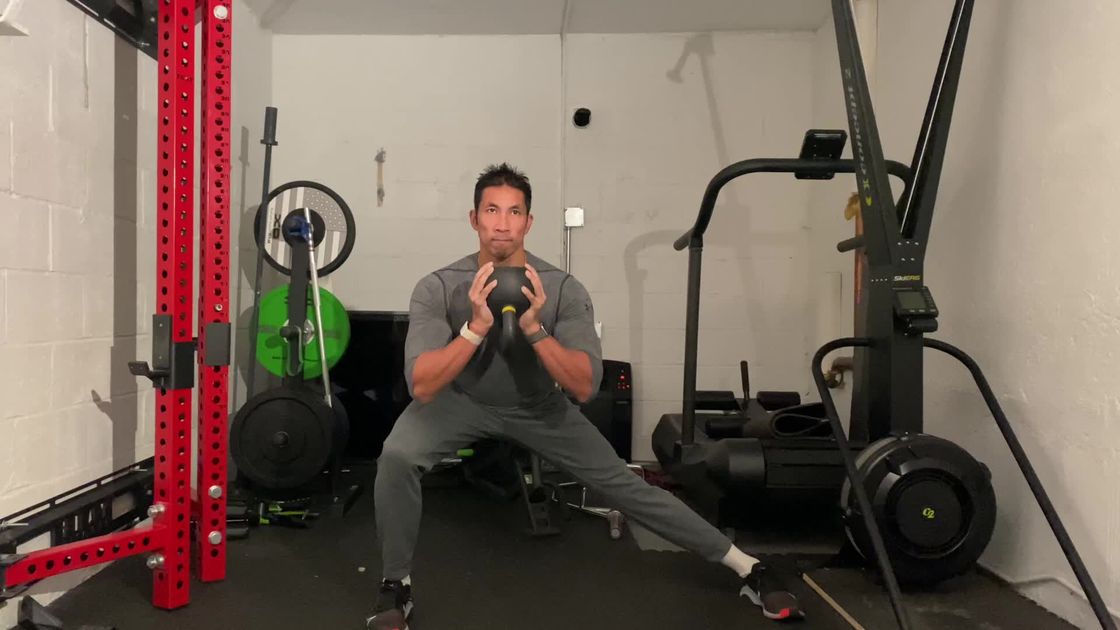WHEN YOU ENVISION a leg day workout, you likely see rows of squat racks, leg presses, and Smith machines in your mind’s eye. All of these pieces of equipment are staples for lower body training, giving you a wide range of resistance to build your quads, glutes, hamstrings, and calves. But these aren’t your only options for leg day training—and on the days that you don’t have a whole gym’s worth of space or gear, they’re not going to be the ones you’re able to choose. On those days, reach for a pair of dumbbells for your leg day workout.
Dumbbells are usually available without a long line when you’re in the gym, and they’re the easiest piece of gym equipment to keep at home. Adjustable dumbbells make it much easier to own a wide range of weights, and you can switch them up on the fly without having to walk back and forth to the rack. Whether you’re training at home or in the gym, your dumbbells will likely be the simplest way to add resistance to your training session.
It’s still completely possible to build a crushing leg day with just one piece of equipment, but you may need to approach how you train legs differently when you’re using dumbbells. You might have a tough time loading up for your favorite lower body movements compared to using barbells at first. Depending on the sizes of dumbbells you have access to, you may need to use one or two so you can control how much load you want to use. So, it’s important to understand how to hold the weights.
3 Ways to Hold Dumbbells for Leg Workouts
Front Rack – With one or two dumbbells, hold the weights at shoulder height, with the rear head of the dumbbell on your shoulder.
Goblet – Hold one dumbbell by gripping one end of the weight with both hands, with your palms underneath to support it.
Suitcase (Hands at Sides) – With one or two dumbbells, hold the weights at your side. Grip the handles tightly and let the weight hang, but engage your shoulders to keep your torso upright throughout your movement.
What Are the Benefits of Using Dumbbells?
Not only are dumbbells easily accessible, they can provide a unilateral element to weight training that heavyweight gear like straight bars and machines do not. With dumbbells, you’re able to more easily focus on one leg or the other at a time, building one-sided strength that’s important for balance.
Dumbbell training can also help with muscle coordination. Since the weight doesn’t sit on a fixed tract like the Smith or hack squat machines, more muscle recruitment is required to stabilize movement. This allows for mind-muscle connections to strengthen.
Plus, dumbbells have a wide variety of loads, making them useful to novices and experts alike.
Who Should Do Dumbbell Leg Workouts?
Anyone with a dumbbell handy will benefit from this leg day burn.
Some stripes of gym bros might be more likely to skip out on leg day, but you’ll only shortchange yourself if you don’t make it a focus. Strength training your lower half will help improve your balance and coordination. Having strong legs can improve your speed and explosiveness in performance-related activities, like field sports and running. Strengthening these muscles can also help to protect the hips, knees, and ankles from injury.
Working with dumbbells allows you to move more freely than with other implements and machines, making multi-planar exercises much easier to pull off. You can have a more balanced workout that way, with movements that mimic real life instead of always having both feet down on the ground at the same time.
With a little creativity and plenty of effort, you’ve got plenty of options for exercises. Check out this four-move dumbbell-only leg workout you can use to build up your wheels.
The Dumbbell Leg Workout
Goblet Squat
4 sets of 6 to 8 reps
The goblet squat is all about fundamentals—and it’s one of the best ways you can go heavy with a dumbbell. That will be a challenge for your core, so make sure to keep your elbows high, your shoulders engaged, and your back straight. You’ll need to be sure to work within your mobility, too. Go deep, but make sure that you can keep your form strong for every rep.
Single-Leg Deadlift
3 sets of 8 to 10 reps
Get unilateral and focus on one leg at a time to work your hamstrings and glutes. Instead of kicking back with your non-working leg and making the exercise a balancing act, only lift your foot off the floor and let it float as you move. Also, make sure that you move within your own range of mobility. You should only be lowering to where you feel your hamstrings tighten; don’t worry about how low your torso goes.
Reverse Lunge
3 sets of 8 to 10 reps per side
Kick your lunge in reverse, which can be a lower impact option for your front knee than the forward variation. Hold your dumbbells in any of the positions, but make sure that you can handle the load without bending at the torso or slamming your knee on the floor.
Lateral Lunge
3 sets of 6 to 8 reps per side
Break out of the sagittal plane (front-to-back movement) with this side-to-side lunge, which puts you in the frontal plane. Try this exercise holding one dumbbell in a goblet position. While you can allow your torso to lean forward slightly as you lunge into position, fight to engage your core to keep the weight from pulling you down too much.
Brett Williams, a fitness editor at Men’s Health, is a NASM-CPT certified trainer and former pro football player and tech reporter who splits his workout time between strength and conditioning training, martial arts, and running. You can find his work elsewhere at Mashable, Thrillist, and other outlets.
Cori Ritchey, NASM-CPT is an Associate Health & Fitness Editor at Men’s Health and a certified personal trainer and group fitness instructor. You can find more of her work in HealthCentral, Livestrong, Self, and others.






Comments are closed.